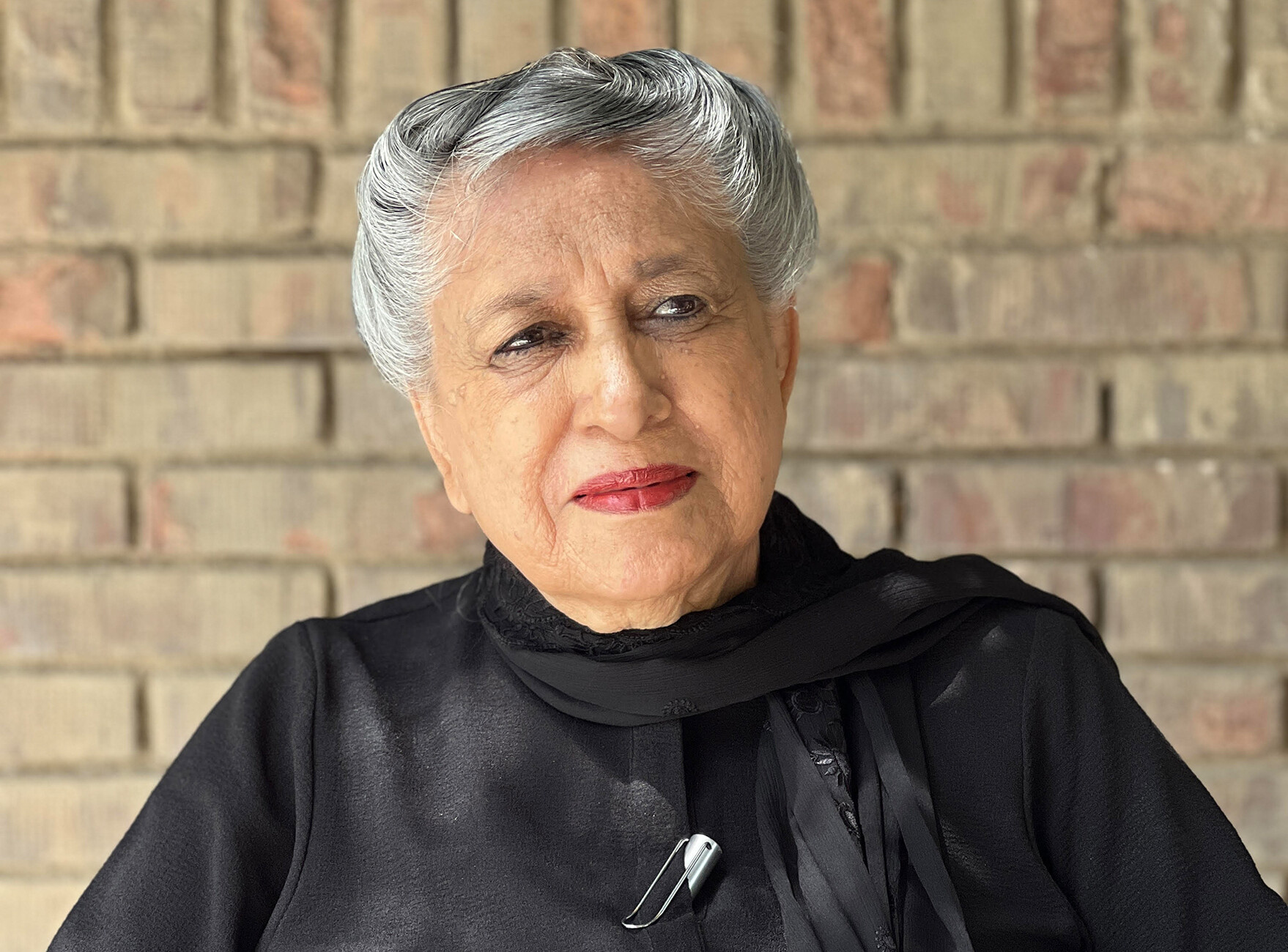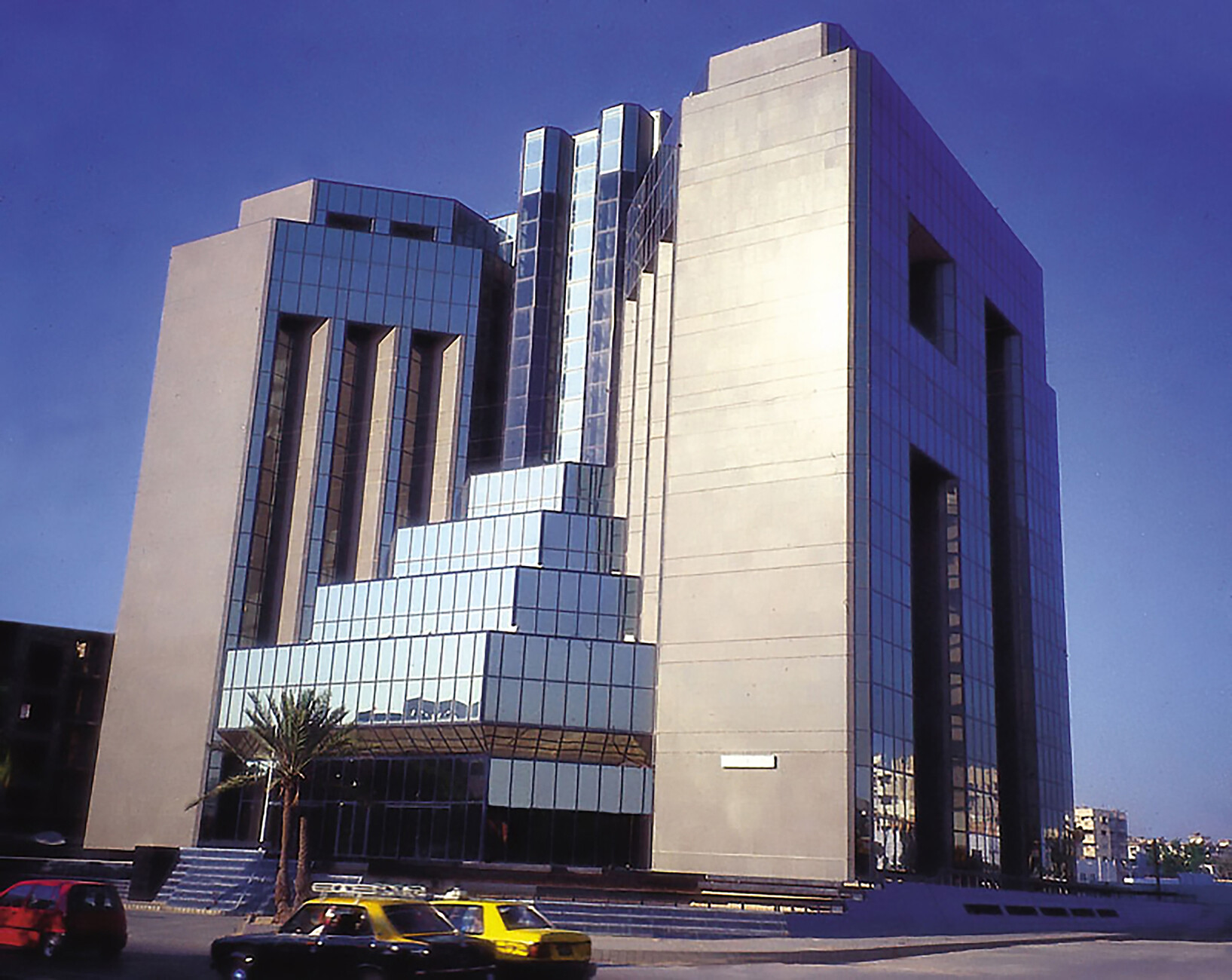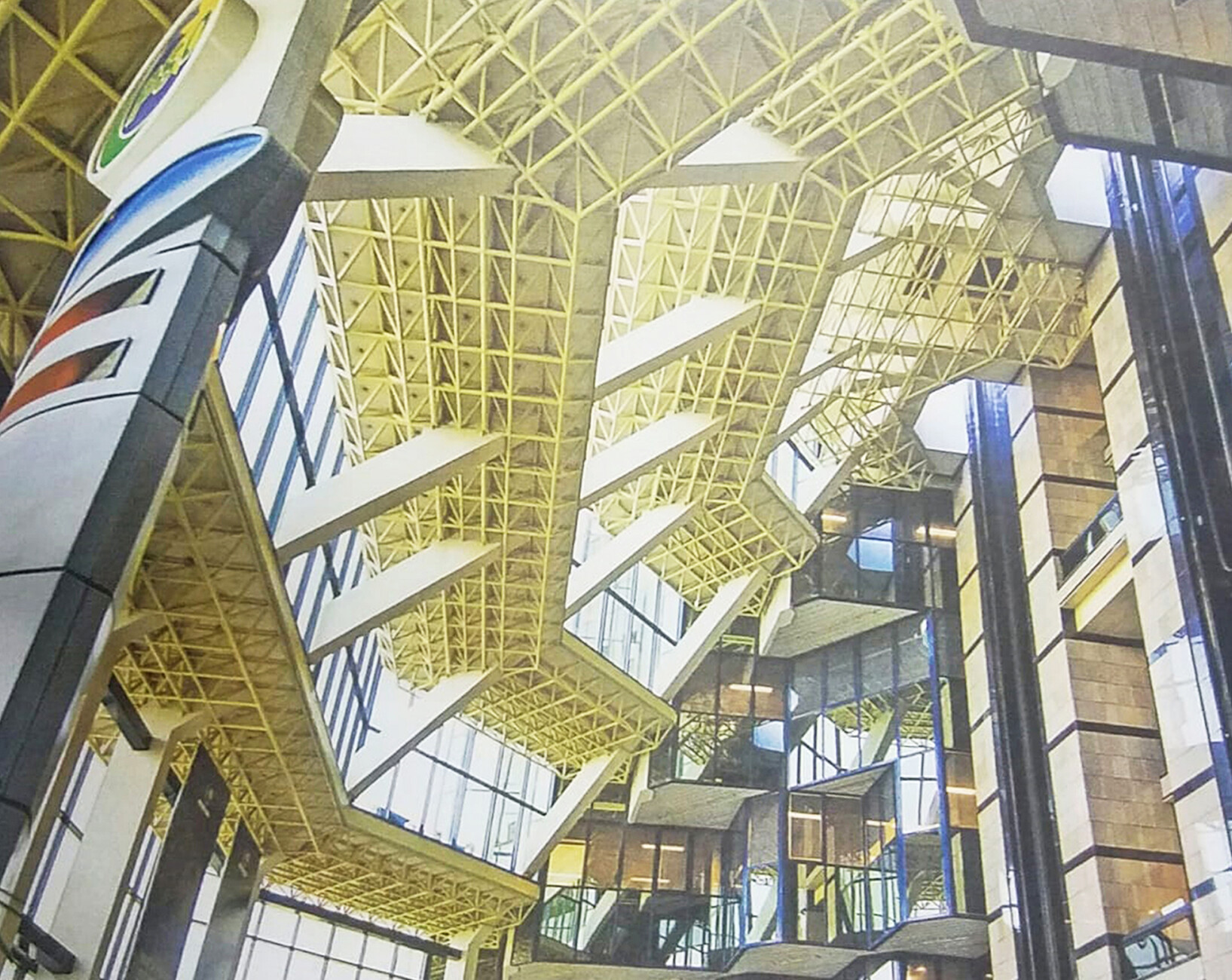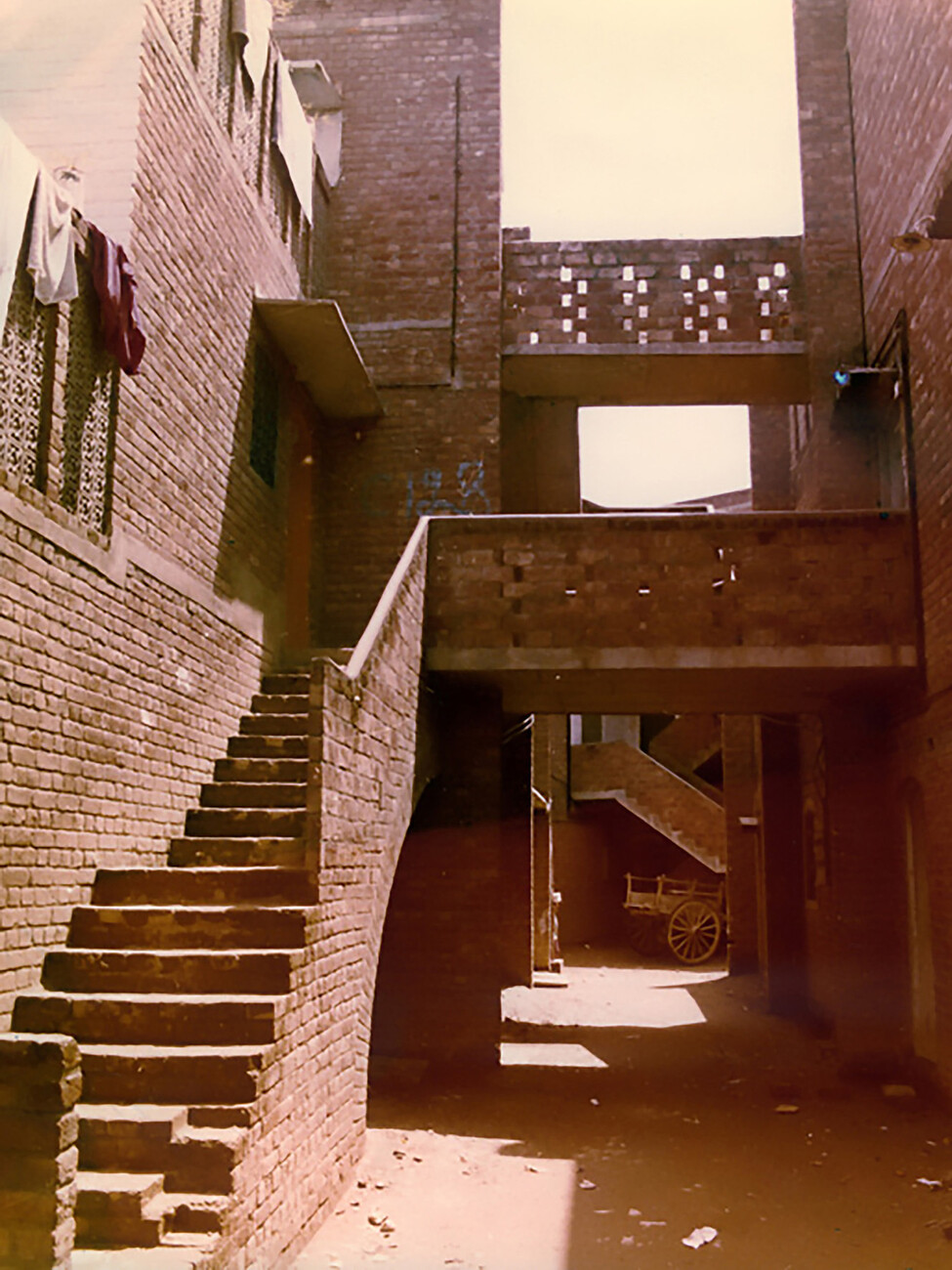Spotlight on Women Architects – Yasmeen Lari
It is said that after changing their faith, converts are often particularly radical advocates of their new beliefs. This is probably also true for the Pakistani architect Yasmeen Lari. For 36 years she pursued “star architecture”, the 82-year-old now says, but then her “egoistic journey” came to an end. Instead, she turned her attention to the poorest and most needy. “It's not only the elites who have a right to good design,” she says. “Architects must stop designing for the one per cent alone.” For such sentiment, she is now also celebrated in Western countries, after having been awarded prizes for her work in her home country Pakistan and in Asia for decades.
Pakistan's first female architect
Lari was born in 1941 in the province of Punjab in central Pakistan, which was still part of the British Empire at that time. She came from a respected and educated family; her father worked for the British colonial government on the planning of large infrastructure projects such as dams, roads and new settlements. In 1947 he began working for the new country of Pakistan, and the family moved to the provincial capital of Lahore. Her father noticed that there was a lack of architects in the young nation and told Yasmeen it would be a good thing if she became an architect. At the age of 15, Yasmeen and her sister Nasreen went to London for a holiday but decided to stay there and go to school, and then to university. While still at school, Yasmeen got married and had her first child. Her application to study architecture was initially rejected, so she studied art for two years before reapplying, and was accepted at the state-run Oxford Polytechnic. After graduating in 1964, Lari went back to Pakistan and opened her own architectural practice in Karachi, Lari Associates, when she was just 23 years old. Today she is called “Pakistan's first female architect”, although it's hard to verify whether this is actually true. Such superlatives are really quite unnecessary, however: Lari was certainly one of the first women to have her own office, and she was very young indeed when she started. Incidentally, her sister, Nasreen Jalil, became a well-known politician in Pakistan – the family's wish that their well-educated daughters participate in building the new state came true.
As an architect, Lari worked along two parallel tracks: She helped develop social housing developments but also designed villas and apartment buildings in the modern, “western” style for private clients. Her first commission was for her brother's house – “Who else would have trusted a brand new graduate with something back then,” Lari once said with a laugh. She attracted attention with the house she designed for her own family in Karachi, which was completed in 1973. With an accentuated load-bearing structure of exposed concrete elements, which are lined with unrendered brick, she introduced Pakistan to British “New Brutalism”. This is complemented by dramatically staged concrete terraces, which she cantilevered out of the building on one side like a dresser's wide-open drawers. “This house is not only a showcase of Lari's experiments with concrete, which she wanted to push to its limits constructively, but also of her optimism and belief in a future open to new opportunities, architecturally as well as politically,” writes curator Martino Stierli in the MoMa catalogue The Project of Independence. Architectures of Decolonization in South Asia, 1947-1985. And further: “Concrete was a powerful emancipatory tool for Lari to use to break down preconceived gender roles in a conservative society and a male-dominated profession.” Lari says that on construction sites she had to prove herself again and again, especially in the beginning. Workers would ask her questions that were difficult to answer or make her climb wobbly ladders. She doesn't complain about that, however. She had to earn their trust. With her powerful, muscular type of construction she also wanted to challenge the “idea of feminine or delicate architecture that was attributed to me as a woman”, says Lari.
From a star to a barefoot architect
This architecture resulted in Lari getting increasingly large commissions from the private sector, including the Taj Mahal Hotel (1981), the Finance and Trade Center (1989) and the headquarters of the Pakistan Petroleum Company PSO (1991) in Karachi. These buildings are huge metropolitan structures made of concrete, steel and glass, clearly oriented towards Western modernism. Today, it is precisely these three buildings that Lari herself sees as representative of her career as a “star architect” that she herself ended in 2000. She wanted to devote herself to doing the opposite: Developing an extremely simple architecture that can be built by people with little prior knowledge, using locally available materials such as mud, bamboo and limestone. She wanted to revive traditional building methods and crafts, spread knowledge about them and explain to people that good, dignified houses can also be created with them. Lari herself speaks of “barefoot architecture” that has high social standards. And she was also committed to preserving the very old buildings, the forts made of mud and the old towns, in which hardly anyone in Pakistan felt were of value. She researches traditional construction methods and the use of materials, and uses this information for both the renovation of existing buildings and construction of new ones.
However, it wasn't a 180-degree turn that Lari made in 2000, not a conversion from Saul to Paul. She had actually been practising architecture with social aspirations throughout her career: For a social housing programme under the aegis of Prime Minister Zulfikar Ali Bhutto, Lari designed one of the first large settlements in Lahore: the Anguri Bagh quarter had to rapidly provide housing for people who had been made homeless by a flood. Lari developed a simple system consisting of a load-bearing structure made of in-situ concrete and brick walls that can be made by unskilled workers with what is available on site: simple tools, simple materials. The result was not entirely different than that of her own home, albeit much simpler to construct. The orientation of the three-storey blocks in Anguri Bagh ensured that each flat had good ventilation and lighting, courtyards and building spacing provided shade and a comfortable micro-climate, and there were also terraces for keeping chickens, which is important in the region. She received international attention for this project as well, being shortlisted for the prestigious Aga Khan Award and having her work shown at the Venice Architecture Biennale in 1982.
Architecture as a way of helping yourself
After Anguri Bagh, parallel to her large-scale commercial commissions, Lari always worked on slum improvement projects in which the existing buildings were not demolished, but improved together with the residents, and, if possible, took advantage of do-it-yourself construction. In 1980 she and her husband founded the Heritage Foundation of Pakistan, as up to that point there had been no preservation of historical monuments in Pakistan, and no awareness of the country's architectural heritage. The same year she started the donor-funded Lines Area Resettlement Programme, which gradually and cooperatively improved the living conditions of about 13,000 residents of Karachi's largest inner-city slum. These changes were oriented to the structure of the old city, which Lari studied and appreciated – narrow streets, small public squares, ample shade, and plenty of cool air for the flats. In all of her projects, Lari has also been concerned with educating people, giving them practical manual skills as well as an appreciation of the old, evolved structures and materials of their building heritage. “I didn't do anything new,” Lari once said. “This knowledge existed in our country before, but it was not used or not used enough.” By expanding on what was already there, she and her team have merely improved the old techniques of building with mud, bamboo and lime and renewed the knowledge base.
After 2000 she devoted herself entirely to her research projects – concerning the value of Pakistan's old cities, for example – and to the creation of humanitarian architecture. Pakistan is hit by devastating floods time and time again, and when this happens Lari travels to the disaster areas to organise reconstruction together with the people affected. Tens of thousands of houses have been built according to her designs, as well as sanitary infrastructure, smoke-free stoves and community facilities like the women's shelter in Darya Khan and the visitor centre for the archaeological excavations in Kot Diji. These are much-needed improvements in the daily lives of tens of thousands of people who otherwise have no access to architecture or urban planning. “We have to rethink everything, and we have to do it now,” says Lari, the 82-year-old, who just last year, when a third of Pakistan was threatened by flooding, was again actively providing construction assistance and advice on the ground. For her, however, this isn't just a theoretical exercise; she's been putting these ideas into practice for years. “Sometimes I think,” she once told the Guardian, “that I want to make up for a bit of what I've done as a star architect with my glass-and-steel buildings.”
“We have to rethink everything, and we have to do it now”
She continues to be a star, however, because her barefoot architecture is hugely popular: In 2002 she was honoured by the UN, in 2006 she received one of Pakistan's highest civilian awards, and in 2011 she was even declared “Wonder Woman of the Year” in her home country. It's only the Western world that has taken a little longer to appreciate her life's work: There were hardly any publications or exhibitions about Lari's work after the Venice Biennale in 1982. This has changed drastically in recent years, however. In 2020, Lari received the Jane Drew Prize in Great Britain, in 2021 an honorary doctorate from the Politecnico di Milano, and she currently holds a visiting professorship at Cambridge. And now the Architekturzentrum in Vienna is showing the first major comprehensive exhibition of Yasmeen Lari's work with an extensive catalogue. It seems as if many non-Western protagonists and positions are still missing in today's standard architecture textbooks: Yasmeen Lari, Hassan Fathy, Mahendra Raj, Muzharul Islam, Minnette de Silva, Geoffrey Bawa... We've only just begun to tap into this source of knowledge.












